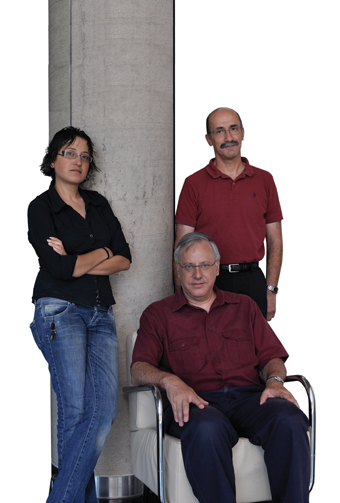The scientists of the Weizmann Institute of Science discovered: a basic mechanism responsible for the operation processes of various excretory organs

Like the underground pipes that form the infrastructure of every modern city, so also at the base of the living body you can find branching networks of pipes: the blood vessels, the digestive system, the respiratory tract and more. The efficient transfer of all these substances between the organs and tissues of the body is essential, both for the ongoing maintenance of the pipes themselves, and for the proper functioning of the body. These systems carry all the materials necessary for the body's cells to function: hormones, salts, nutrients, and oxygen. At the same time, the tubular excretory organs play an equally important role: they remove waste materials from the body. Tubular excretory organs are shaped like a tire with a hole in the center - the excretory tube. The wall of the tube is made of special cells (carrier cells) where the substances intended for secretion are formed. In order to be secreted out, these substances must - in the first step - reach the side of the cell facing the excretory duct cavity. Certain proteins are responsible for this process, which direct the substances intended for secretion to the appropriate side of the cell. However, the details of the mechanism of action of these cells were not known until now. A possible clue to the way these cells work comes from the fact that one side of them - facing the tube cavity - is rich in fibers of a protein called actin, which is an important part of the cellular skeleton. However, the dense organization of actin fibers in tubular organs is unique and poorly understood: how are these fibers formed? How and why are they located on one side of the cell? And what is their role? A new study by Prof. Ben-Zion Sheila, research student (at the time) Dr. Rada Masrava, and Dr. Eyal Schechter, from the Department of Molecular Genetics at the Weizmann Institute of Science, offers answers to these questions for the first time. In a series of experiments carried out in the embryos of the research Drosophila flies, the scientists discovered the protein responsible for the formation of the actin fibers in tubular excretory organs. When the gene responsible for the production of this protein, called Dia, was damaged, actin fibers were indeed seen growing in different areas of the cell, but the typical fibers were not found on the side of the cell facing the tube cavity. Is it possible that the protein Dia is responsible for the growth of the actin fibers on this side of the cell? Additional experiments showed that in order for the Dia protein to fulfill its role, it must be activated by additional proteins. One of those activating proteins is embedded in the cell membrane facing the tube cavity - which ensures the formation of fibers on the desired side.
What is the function of these actin fibers? The scientists discovered that in cells where actin fibers were not formed, the secretion of various substances into the cavity of the excretory organ was prevented. That is, the fibers "mark" the passage path of the secreted substances to the destination - the secretory canal. Another protein discovered in these studies is called myosin V, and it moves the substances intended for secretion along the actin fibers, until the opening of the secretion canal.
Prof. Sheila: "The excretory mechanism we discovered in the research Drosophila flies works in different excretory organs, regardless of the type or size of the organ. In the following studies we will try to check if it also works in mammals, including humans. We hope that the insights we gain in these studies can help to better understand the secretion mechanisms, which may improve the ability of doctors to deal with medical problems caused by deficiencies in the secretion processes."
